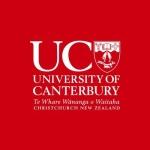UC finds new technique to help save endangered bird
A new technique to help save endangered species, such as national icon the kiwi, has just been published by a recent Canterbury University science PhD graduate, Sol Heber.
The management technique could be used not only with endangered species of kiwi, but with other species which only survive in small and isolated populations and as a result suffer from excessive levels of inbreeding. Other New Zealand examples include the North Island kokako and yellowhead (mohua) in the South Island.
Endangered species that decline to only very small populations can become inbred because there are no other choices for mates except relatives. This means genetic problems start to occur that reduce fertility and survival.
Ideally some individuals from another larger population, that are not inbred, are introduced to bring in new genetic material and increase the survival and fertility rate. However, Associate Professor Jim Briskie, who collaborated with Dr Heber on the project, said there are often no other populations of endangered species to use as non-inbred donors - “that is the reality.”
The usual situation for endangered species is to end up with a number of small isolated populations that become inbred. Dr Heber’s research showed it is possible to swap members between inbred populations even though both may suffer from fertility and survival problems. It was found that doing this significantly helped both populations.
Associate Professor Briskie said the novel finding from their study was that inbred donors should not be ruled out as part of management for endangered species.
``Control of introduced predators is usually the main cause of population decline in most New Zealand species, but if we solve that problem it would be a shame if a species then went extinct because of inbreeding,’’ he said.
Dr Heber’s work has showed this technique can not only be used in New Zealand birds but in endangered insects, animals and plants around the world because the same genetic principles should apply.
Associate Professor Briskie said further research needs to be done, to see what happens over the long term for populations “rescued” with the introduction of inbred individuals.
``It may be this technique needs to be used every few generations to keep the species from again losing genetic variation and suffering inbreeding depression,” he said.
The technique is not without risks such as spreading disease between small isolated populations but Associate Professor Briskie said the risks had to be weighed against a population going extinct.
